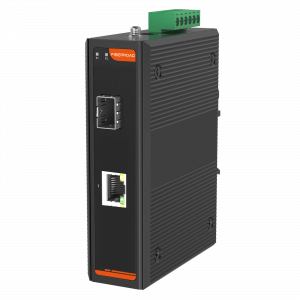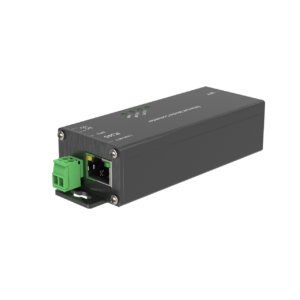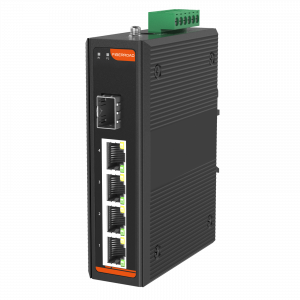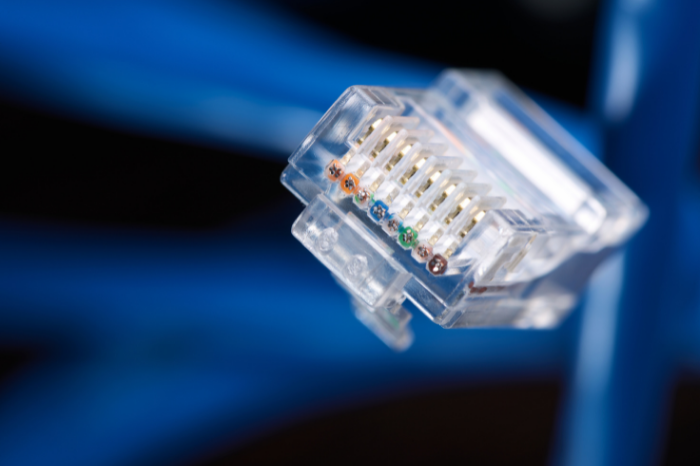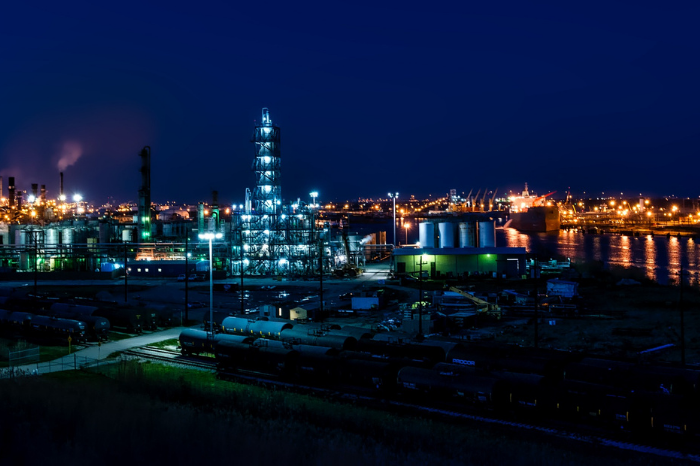Quality Certifications
Guarantee
Share This Product
Industrial-Grade Gigabit PoE++ Media Converter – Robust Connectivity for Harsh Environments
Designed for demanding industrial applications, this Gigabit PoE++ Media Converter delivers reliable high-speed data and power transmission in extreme conditions. Operating seamlessly from -40℃ to +75℃, it ensures stable performance in cold or scorching heat environments. With ±6kV surge protection on the PoE port, it safeguards connected devices against power surges and electrical interference. Its wide 5% to 95% operating humidity range makes it ideal for humid or moisture-prone settings. Whether deployed in factories, outdoor installations, or harsh industrial networks, this rugged media converter provides uninterrupted Power over Ethernet (PoE++) support while maintaining superior durability.
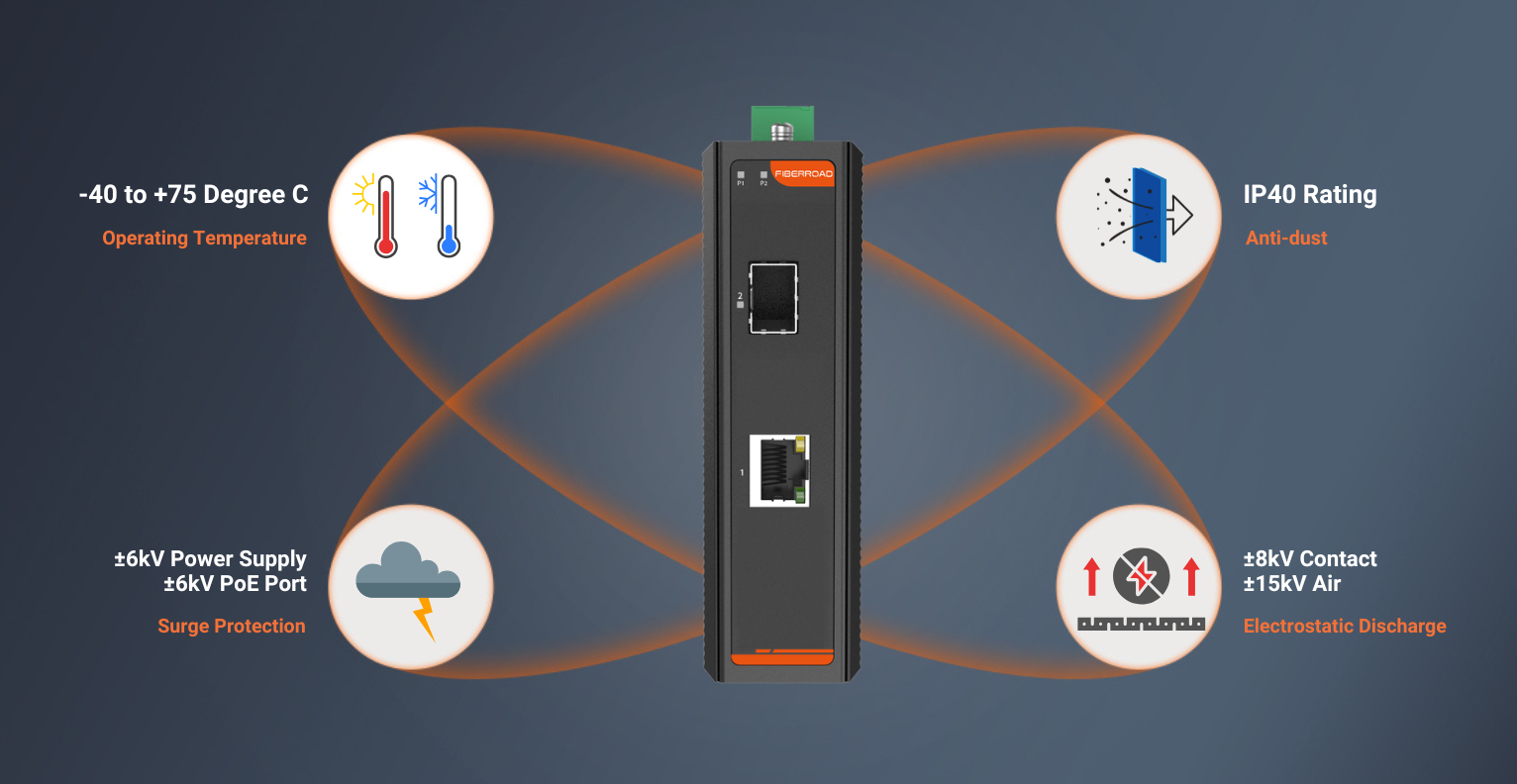
Industrial Gigabit PoE++ Media Converter – IEEE 802.3 af/at/bt Compliant with Auto-Power Detection
This Industrial Gigabit PoE++ Media Converter delivers high-speed data and intelligent power delivery, fully compliant with IEEE 802.3 af/at/bt (PoE++) standards. Equipped with auto-detection technology, it dynamically identifies connected Powered Devices (PDs) and supplies the precise voltage required—eliminating the risk of under- or over-powering equipment. Supporting a wide range of PDs, from low-power IP cameras to high-performance wireless access points, this robust converter ensures seamless connectivity in industrial environments. With rugged reliability and universal PoE compatibility, it’s the ideal solution for powering and networking devices efficiently and safely.
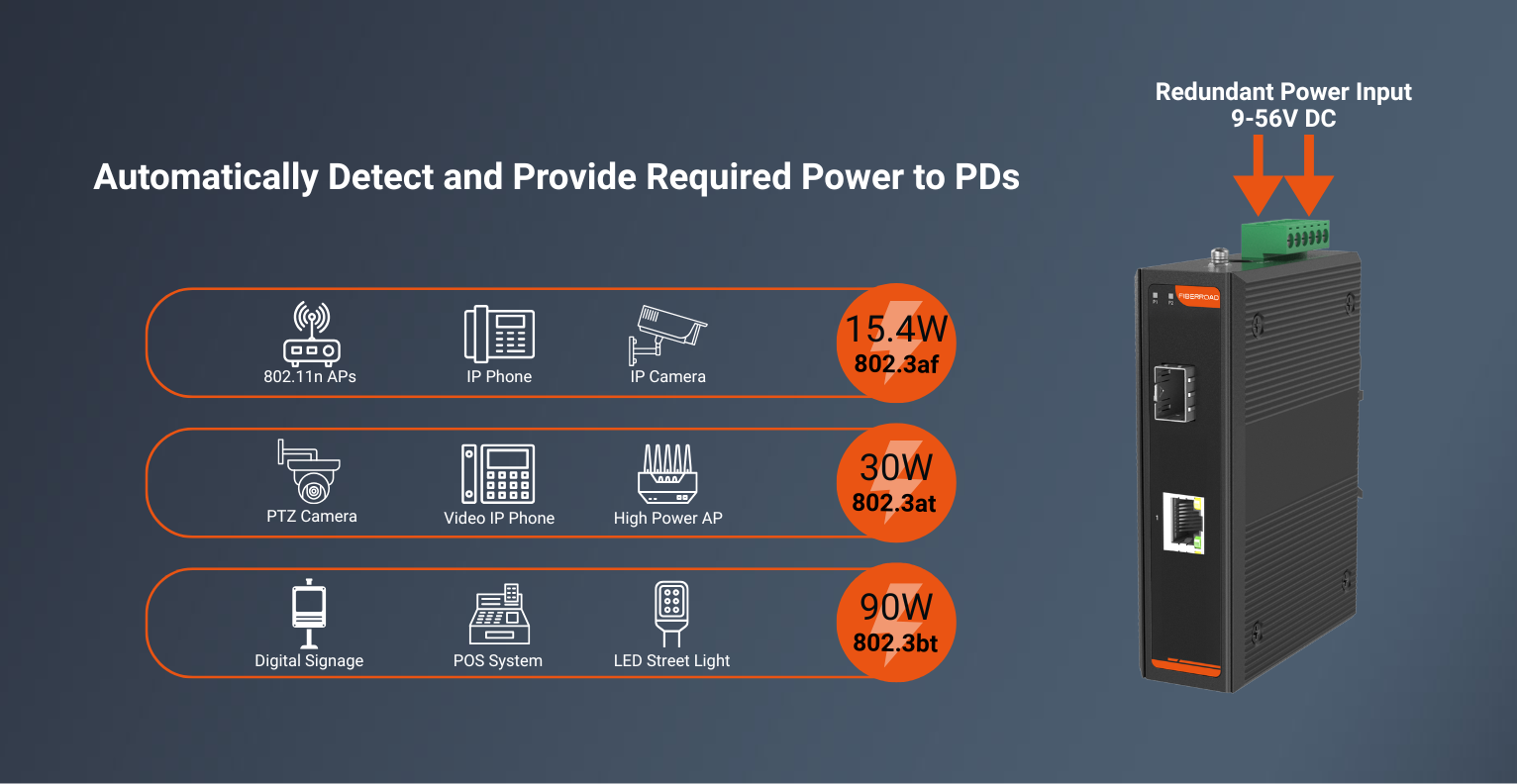
Extend Network Reach Up to 120km via Fiber Optic Module
This Industrial Gigabit PoE++ Media Converter bridges copper and fiber networks with flexible connectivity options. Featuring an SFP slot for optical modules, it enables long-distance fiber transmission up to 120km, far beyond traditional Ethernet limits. Ideal for industrial applications requiring extended reach—such as remote surveillance, smart transportation, and rugged outdoor networks—this converter maintains high-speed Gigabit PoE++ power and data delivery while overcoming distance barriers. With ruggedized design and reliable fiber-optic performance, it ensures stable, interference-free connectivity across vast industrial deployments.
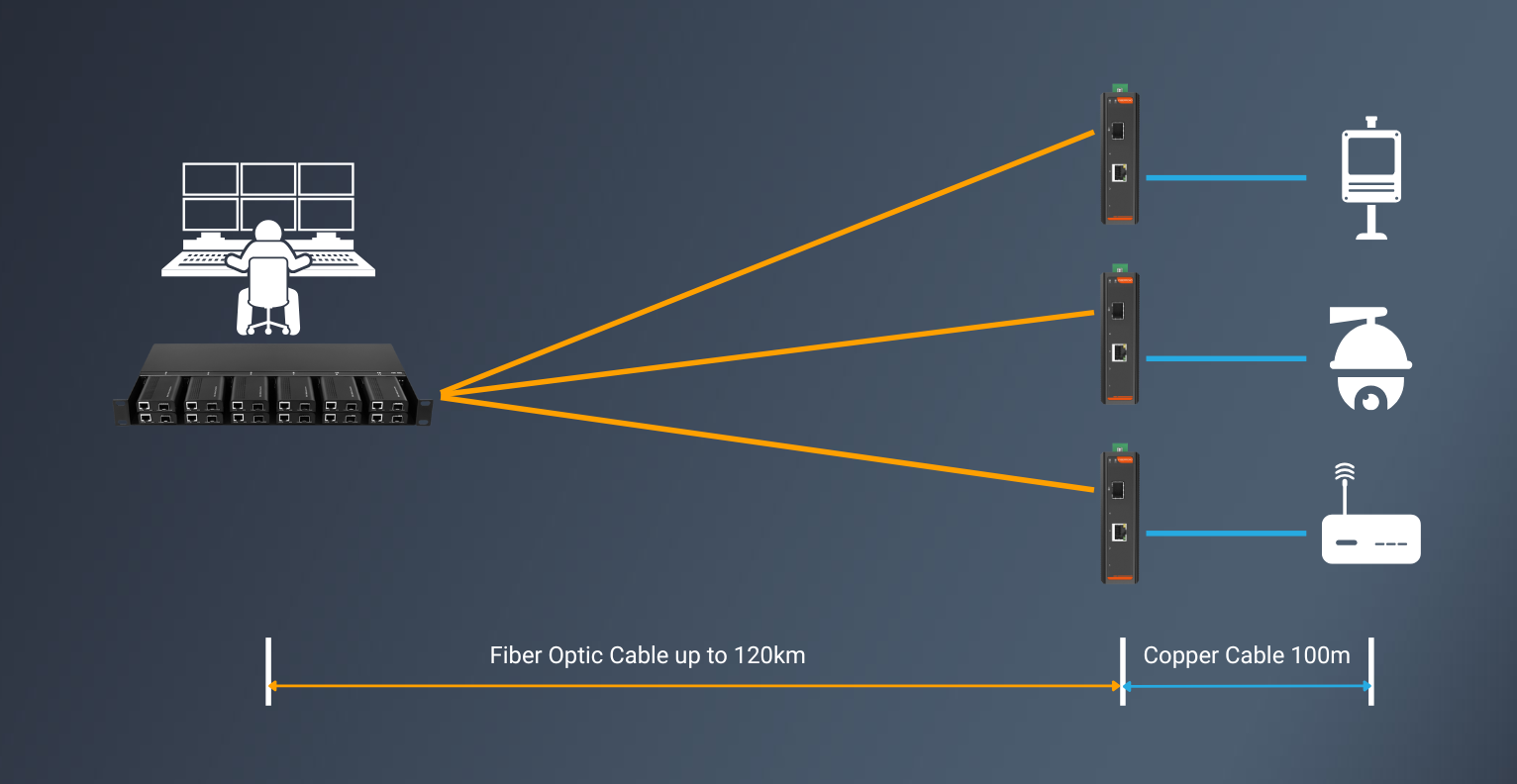
Industrial PoE Media Converter FAQs
The Industrial PoE++ Media Converter is designed to provide reliable, high speed connections between Ethernet and Power over Ethernet (PoE) devices. It works by converting incoming data signals from the network into electrical current that is used to power connected devices. This helps ensure consistent and reliable performance in the network infrastructure. The PoE++ Media Converter also offers an impressive level of reliability with its fanless design, low power consumption, and ability to withstand electric interference, salt fog, vibration, and shocks.
Our Industrial PoE++ Media Converter stands out from other similar products on the market due to its fanless design and low power consumption, as well as its resistance to electric interference, salt fog, vibration, and shocks. We have also built in a mature technology and open network standards so that it can operate at both low and high temperatures. In addition, our product is easy to integrate into existing networks without needing any additional hardware or software. All of these features make our product the perfect choice for network engineers who want a reliable and maintenance-free media converter solution.
Absolutely! Our Industrial PoE Media Converter has been successfully deployed in a variety of industrial settings, from factories and warehouses to shipping yards and ports. We have seen our device used to connect surveillance cameras, data terminals, and other devices that require robust connectivity over long distances. Our device is flexible enough to handle both single-mode fiber connections as well as multi-mode fiber connections at extended distances.
| Hardware Specifications | |||
| Product | FR-7N3101 | FR-7N3101P | FR-7N3101BT |
| Copper Ports | 1×10/100/1000BASE-TX RJ45 Auto-MDI/MDI-X (Port 1) | ||
| Fiber Ports | 1x1000BASE-X SFP Slot (Port 2) | ||
| Enclosure | IP40 aluminum case | ||
| Installation | DIN-Rail and Wall-mount | ||
| Dimension | 120 x 90 x 35 mm | ||
| Weight | 370g(Bare weight), 470g(With package) | ||
| Surge Protection | ±6kV DC, ±4kV RJ45 | ±6kV DC, ±6kV RJ45 | |
| Switching | |||
| Switch Architecture | Store-and-Forward | ||
| Switch Fabric | 14Gbps/non-blocking | ||
| Forward Filter Rate | 14,880pps(10Mbps)
148,800pps(100Mbps) 1,488,000pps(1000Mbps) |
||
| Packet Buffer Size | 512 Kbits | ||
| MAX. Packet Length | 9K bytes | ||
| MAC Address Table | 2K entries, automatic source address learning and aging | ||
| Power Supply and PoE | |||
| Product | FR-7N3101 | FR-7N3101P | FR-7N3101BT |
| Power Input | 2 | ||
| Power Connector | 1 removable 6-contact terminal blocks
Pin 1/2 for Power 1, Pin 3/4 for Power 2, Pin 5/6 for fault alarm(As required) |
||
| Operating Voltage | DC9-56V | DC48-56V | DC52-56V |
| Power Consumption | 4 Watts Max (without PoE load) | ||
| Protection | Reverse Polarity, Overload Current | ||
| PoE Ports | \ | Port 1 IEEE802.3 af/at | Port 1 IEEE802.3 af/at/bt |
| PoE Power Supply Type | \ | End-span | End-span |
| Power Supply Pin | \ | 1/2(+), 3/6(-) | 1/2(+), 3/6(-) or 4/5(+), 7/8(-) |
| Max Power Per Port | \ | 30W | 90W |
| PoE Power Budget | \ | 35W | 95W |
| Environmental | |||
| Operating Temperature | -40℃ to +75℃ (-40 to 167 ℉) | ||
| Storage Temperature | -40℃ to +85℃ (-40 to 185 ℉) | ||
| Operating Humidity | 5%~95% (non-condensing) | ||
| Heat Dissipation | 7 BTU/h (Non-PoE), 218 BTU/h (with 30W PoE load), 314 BTU/h (with 90W PoE load) | ||
| Cooling | Passive Cooling | ||
| MTBF | >500,000 hours @MIL-HDBK-217F GF 25℃ | ||
| LED Indicators | |||
| P1 & P2 | ON: Power is being supplied ,OFF: Power is not being supplied | ||
| Fiber Port | ON: Port connection is active, Blinking: Data transmitted, OFF: Port connection is not active | ||
| RJ45 Port Amber LEDs | ON: Port connection is active, Blinking: Data transmitted, OFF: Port connection is not active | ||
| RJ45 Port Green LEDs | ON: Port is operating at 1000 Mb/s, OFF: Port is operating at 10/100 Mb/s | ||







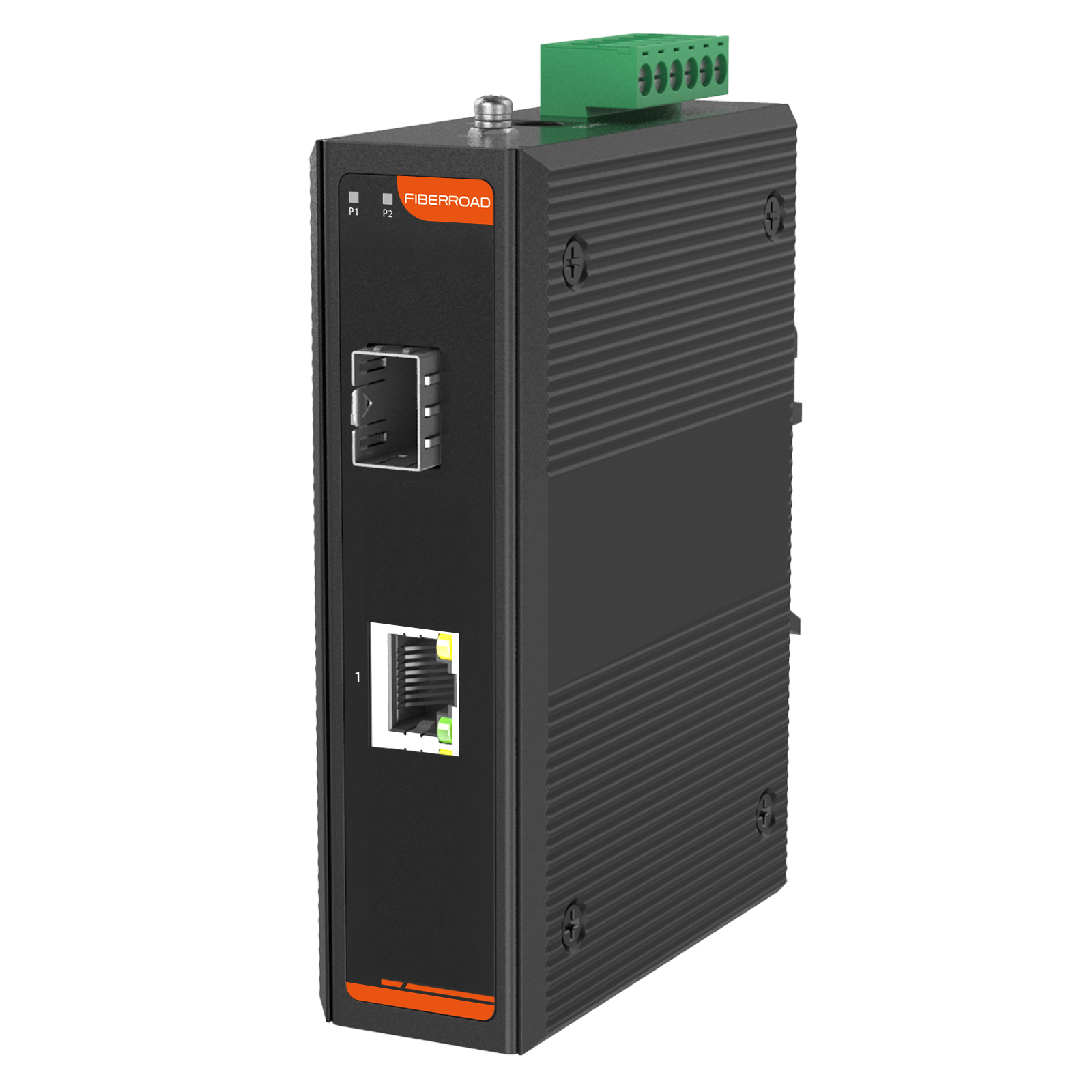
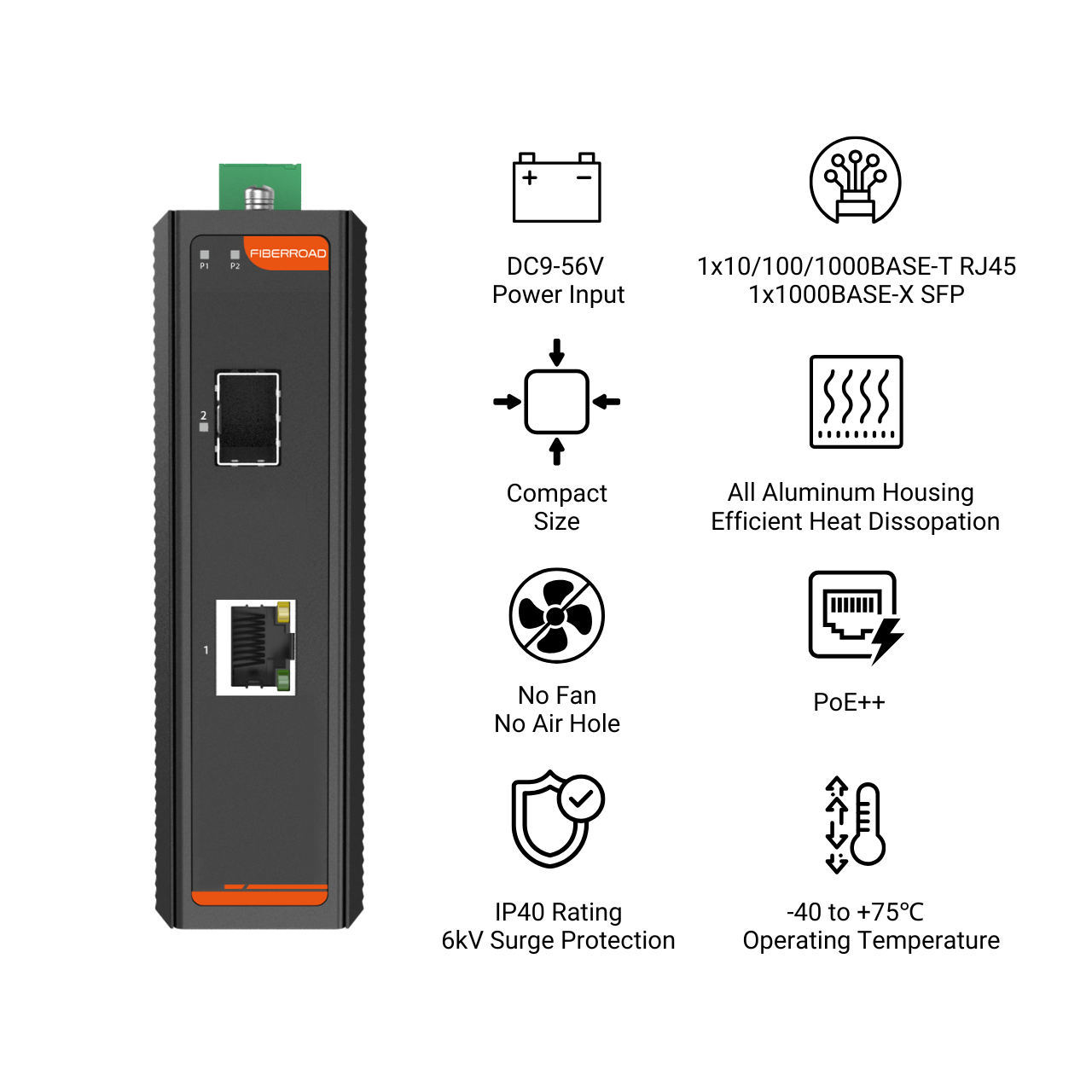


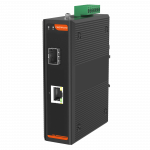
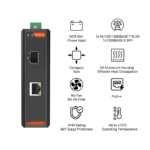







-1.png)



